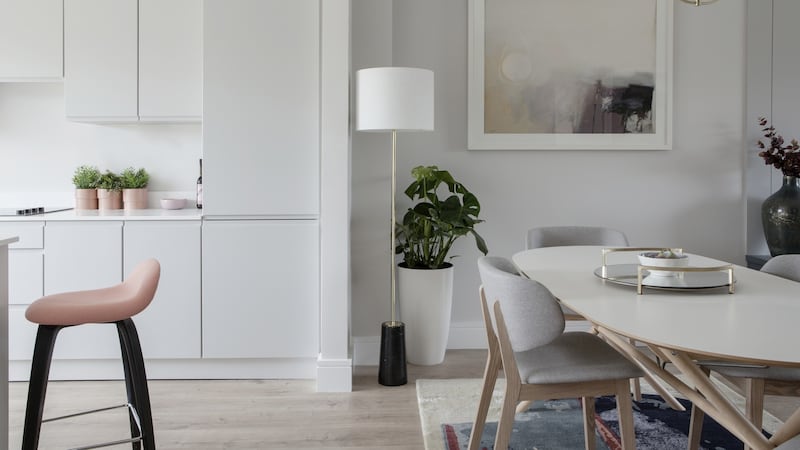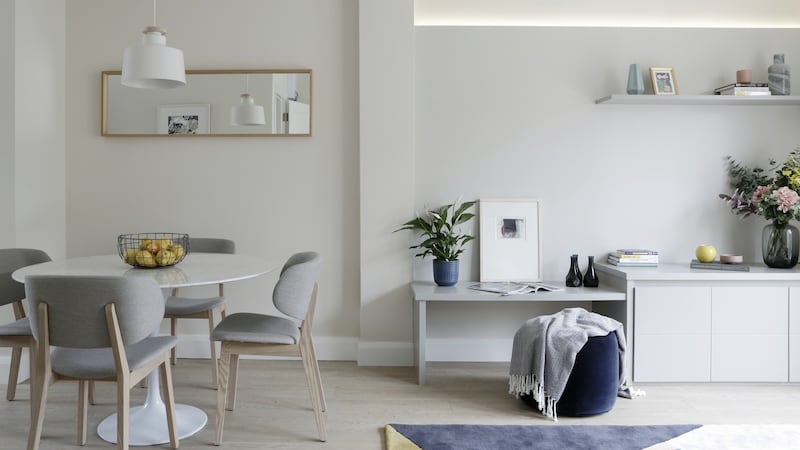There was a trend in the 1980s for decorating every room in the house in a completely different colour. Even bathrooms had their own colour scheme, complete with co-ordinating coloured sanitaryware and carpets. The colour differences throughout the house were so pronounced that rooms were referred to by colour rather than function. I remember friends who referred to their TV room as the blue room.
Thankfully, today’s trend is far less of an assault on the senses. It’s all about viewing the home as a single entity and making sure each room connects to the adjoining rooms in some way. Here are five ways to ensure you create a sense of flow in your home and, with that, a sense of space and sophistication.
Have a plan
Regular readers of this column will know that "have a plan" is pretty much my mantra for starting out on the right foot when tackling any home improvement project. But it's especially important if you are trying to create a sense of flow in your home.
Starting in one room without an overall plan for the rest of the house is probably one of the most common mistakes I see people make when decorating. This approach means you are likely to end up with a home that feels disjointed, as jobs done independently are unlikely to compliment each other.
Bear in mind that improving or updating one area of your home is going to highlight other areas that need work, so proper planning is essential. Without a plan you risk starting a snowball effect of work needing to be done. You’ll waste money and won’t be adding value.

Choose a unifying base
Your choice of flooring is critical when creating flow in a home. All of the floor finishes you choose should complement each other. If you have tiles and timber on a ground floor, for example, make sure they share a similar base tone.
Try to avoid thresholds where possible as they tend to visually break the flow when moving through rooms. In a small space, it’s always nice for the flooring to be the same in every room. For example, the same hardwood floor running throughout the home will prevent rooms from looking disconnected.
If you’re going for carpets in bedrooms, I’d recommend choosing the same colour throughout. By doing this, rooms will flow nicely into one another and by having a common floor colour you’ll find you naturally choose colours that work together for each of the bedrooms.

Choose complementary wall colours
Your choice of paint colours is critical when trying to make rooms connect to each other. My advice would be to choose a variety of neutral shades together to create depth.
When it comes to choosing your colours, try not to use too many. It’s best to limit your selection to three or four for your base tones, then you can build on this with accent colours in accessories and artwork. Three or four shades might not sound like a lot, but if you use too many colours it will start to look cluttered and you will lose the flow between rooms.
When decorating rooms in different colours, I would recommend painting the ceilings and woodwork, such as door skirtings etc in the same colour. This is a really simple way to make the rooms connect to each other.

Keep your style consistent
Even if you nail your floor and wall colours, having different styles throughout the house can make it feel very disconnected. If you do have an eclectic mix of furniture and accessories let that work throughout the house. It's better to have a mix of styles in every room than having rooms decorated in completely different styles.
If you are trying to mix old and new, again do this throughout the house, otherwise you’ll end up with part of the house feeling very dated and the rest feeling contemporary and out of place.
The most important tip when decorating rooms is to decorate with items you really love. If you stick to your own style and choose items you’re really drawn to, they will somehow all work together.
Have fun with accessories
Accessories are the perfect way to introduce bolder or more trendy colours into your home. When you have a neutral base to work from it allows you to have a lot of fun with accessories.
By layering and playing with colour in cushions, rugs, throws and artwork you’ll be able to give each room its own personality and create atmosphere without overpowering the space and losing flow.
The nice thing about working with a complementary colour scheme throughout your home is that pieces of furniture and accessories can be interchangeable. This means you will have a really versatile scheme to play with, meaning you can totally update any room without a huge investment.















